File manipulation commands in Linux
Overview
File manipulation commands are essential for anyone working with Linux. These commands allow users to create, delete, move, copy, and modify files and directories. Understanding these commands is crucial for navigating the Linux file system and performing tasks efficiently.
This article aims to provide a basic understanding of the essential file manipulation commands and their usage in Linux.
What is File Manipulation in Linux
The term file Manipulation refers to the process of creating, modifying, and deleting files and directories. In Linux, file manipulation is very essential to learn, since similar to Unix everything in Linux can be treated as a file. This means, in Linux, not only files but directories, devices, processes, sockets, and everything else is a file. All these files and directories are organized in a hierarchical tree-like structure, with the root directory ("/") being the topmost level.
This makes understanding basic file manipulation commands important for Linux users since it paves the way through which we can navigate our Linux systems from the command line.
Understanding How to Manipulate and Navigate through Files in Linux
Printing the Current Directory
As we have previously discussed, Linux has a hierarchical directory structure consisting of numerous files and directories, the root being the topmost one. To navigate through the directories and files in Linux we need to know in which directory we are in. To know this we can use the pwd command. This command will print the current working directory, i.e. the directory in which we are currently in.
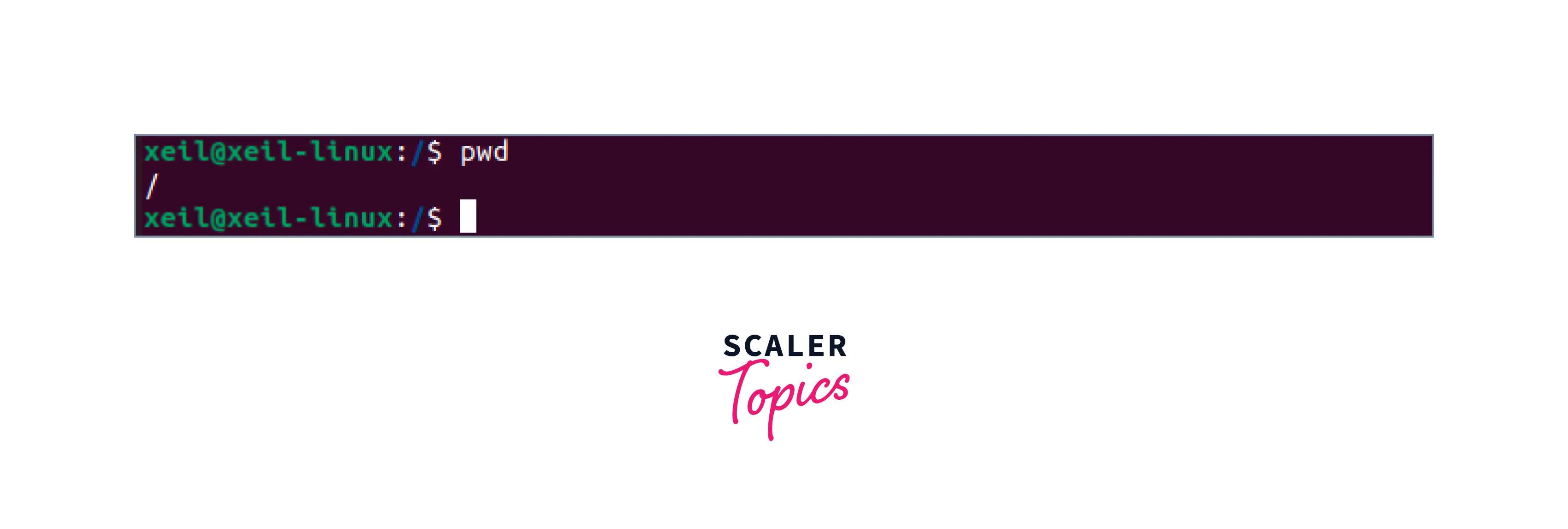
In the above example, the pwd command prints the current working directory i.e. the "root(/)" directory in this case.
Listing the Contents of the Current Directory
Now, since we know which directory we are in, let us try to figure out what is inside these directories. For this, we can use the ls command.
Syntax:
Here, [options] are the different flags that can be used with the ls command, and [directory] is the directory whose contents you want to list. When no directory is specified, the ls command will list the contents of the current directory.
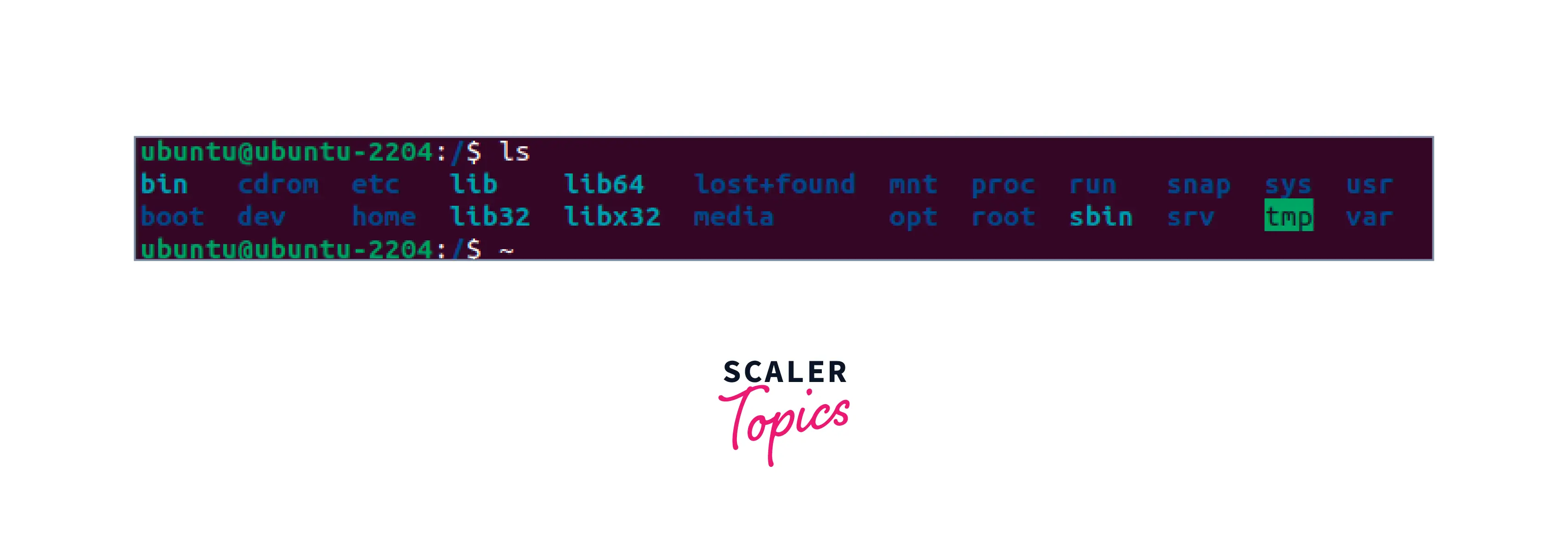
Here, the ls command lists the contents of the root (/) directory which in this case, is the current working directory.
Multiple options are available with the ls command. Some of the commonly used ls options along with their syntax are as follows -
-
-l: This option displays the contents of the directory in a detailed, long format. It includes information about the file type, permissions, owner, size, and modification date. For example:
-
-a: This option lists all files and directories, including hidden files that start with a dot (.). For example:
Changing a Directory
Now, that we know how to figure out what is inside various directories, let us understand how we can change our current working directory. To change the current working directory in Linux, the cd command is used.
Syntax:
Here, the cd command is followed by [/path/of/directory], which refers to the name or path of the specific directory that you want to switch to.
Let's see an example where we switch our current directory using the ls command.

Here, we successfully changed our working directory from "root(/)" to "home".
There are various options available with the cd command that can be used to switch to specific directories. Some of the commonly used cd options are as follows-
-
-: This option used with cd will let switch to the previous working directory. For example, if like the previous example we went from the "root(/)" to the "home" directory, this option will change the current directory back to "root(/)".
-
..: This option used with cd switches from the current directory to the parent directory of the current directory. For example, if your current directory is "bin" and its parent directory is "root(/)", the .. option will switch to the "root(/)" directory.
-
~: The ~ option when used with cd switches the current directory to the home directory.
-
/: This option when used with cd, will change the current directory to the "root(/)" directory.
Making a Directory
To create a new directory in Linux, the mkdir command.
Syntax:
Here, [options] refer to the optional parameters that we can use with mkdir to modify its behavior. [directory_name] refers to the name that you want to give to the newly created directory.
Let's see an example where we create a new directory using mkdir.
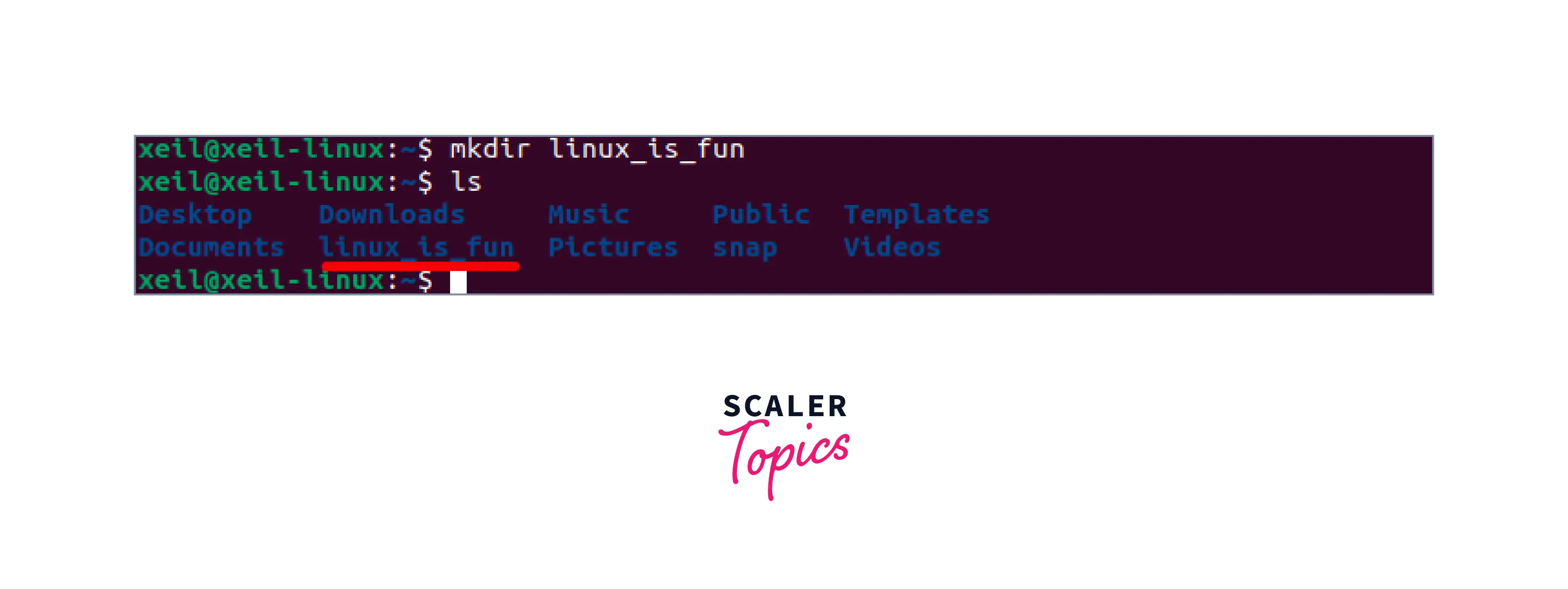
Here, using the ls command, we can see that a directory named linux_is_fun is created.
There are various options that we can use with the mkdir command, some of these options are as follows -
-
-p: This option when used with mdkir, creates parent directories for the newly created directory as needed.
-
-v: This option displays a message for each directory created.
Removing a Directory
Now that we know how to create a directory in Linux, let us learn how to delete one. To remove a directory in Linux the rmdir command is used.
Syntax:
Here, [options] refer to the optional parameters used to modify the behavior of rmdir, and [directory_name] refers to the name of the directory that is to be deleted.
Let us remove the directory that we created using mkdir.
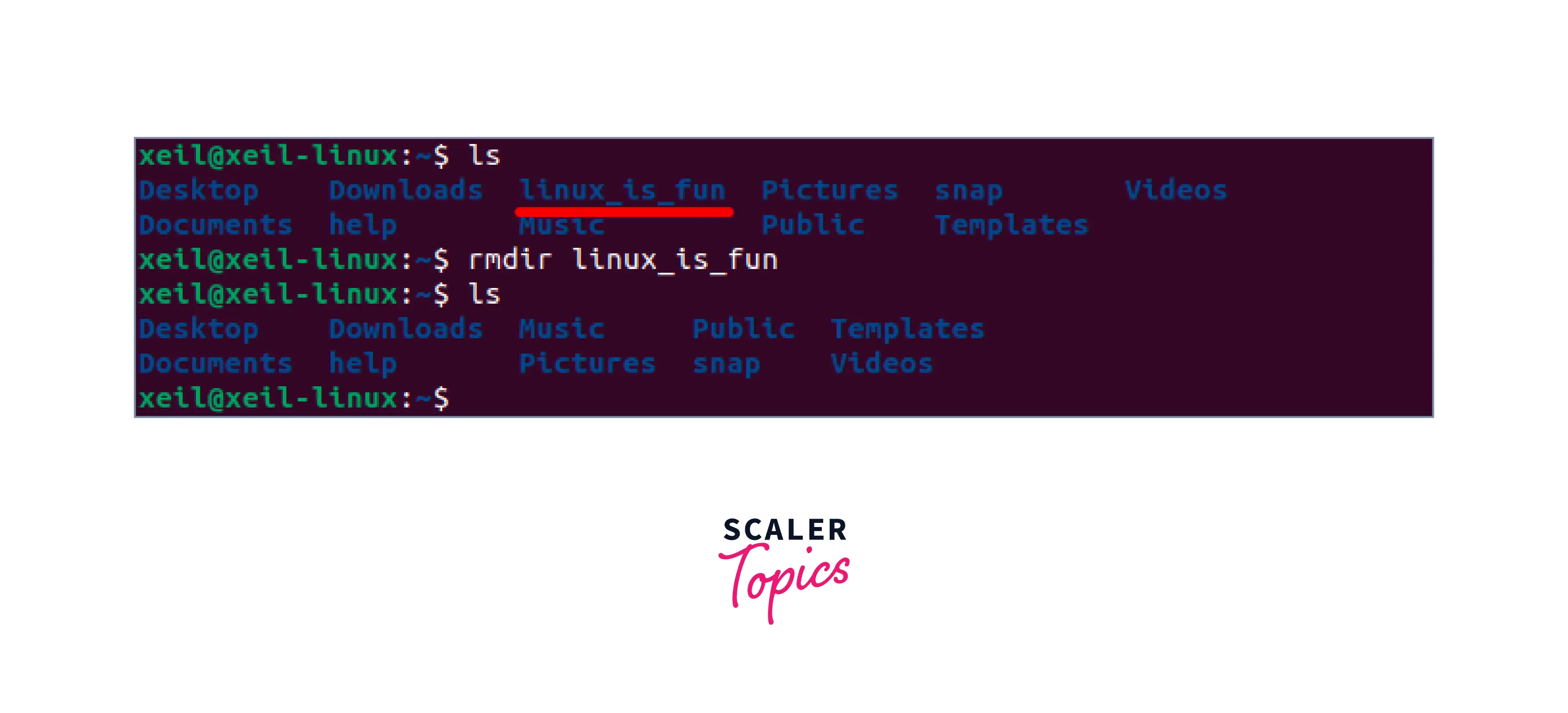
In the above example, using ls we can see, that the fun_with_linux directory is successfully deleted with the help of the rmdir command.
Just like the other commands, various options can be used with rmdir. Some of the commonly used ones are listed below -
-
-p: The -p option allows you to remove a directory and all of its parent directories.
Here, dir/dir2/dir3 refers to the child and parent directories that are to be deleted using the -p option. The above command will delete the child directory dir3 along with its parent dir2 and its parent dir.
-
-v: The -v option used with rmdir will print a message every time a directory is removed.
Creating a File
There are many ways through which we can create files in Linux. One of them is by using the touch command. The touch command creates an empty file.
Syntax:
Here, [options] refer to the optional parameters, and [file_name] refers to the name of the newly created file.
Let us create a text file using the touch command.
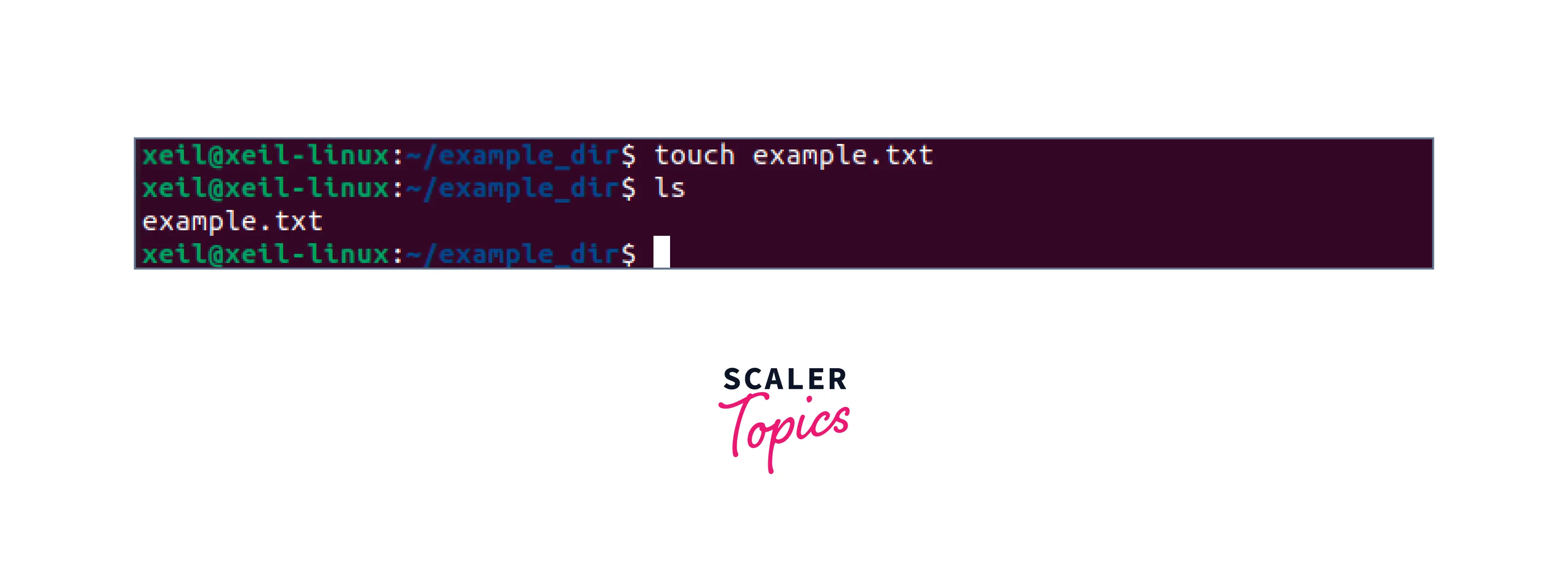
In the above example a blank text file named example.txt has been created.
Viewing a File
In Linux, we can view the contents of a file, using the cat command.
Syntax:
Here, [options] represent the optional parameters of the cat command, and [file(s)] represent the file or files that are to be displayed. In case of multiple files, the cat command will concatenate the contents of the file and display it.
Let's see an example where we use the cat command to view a text file.
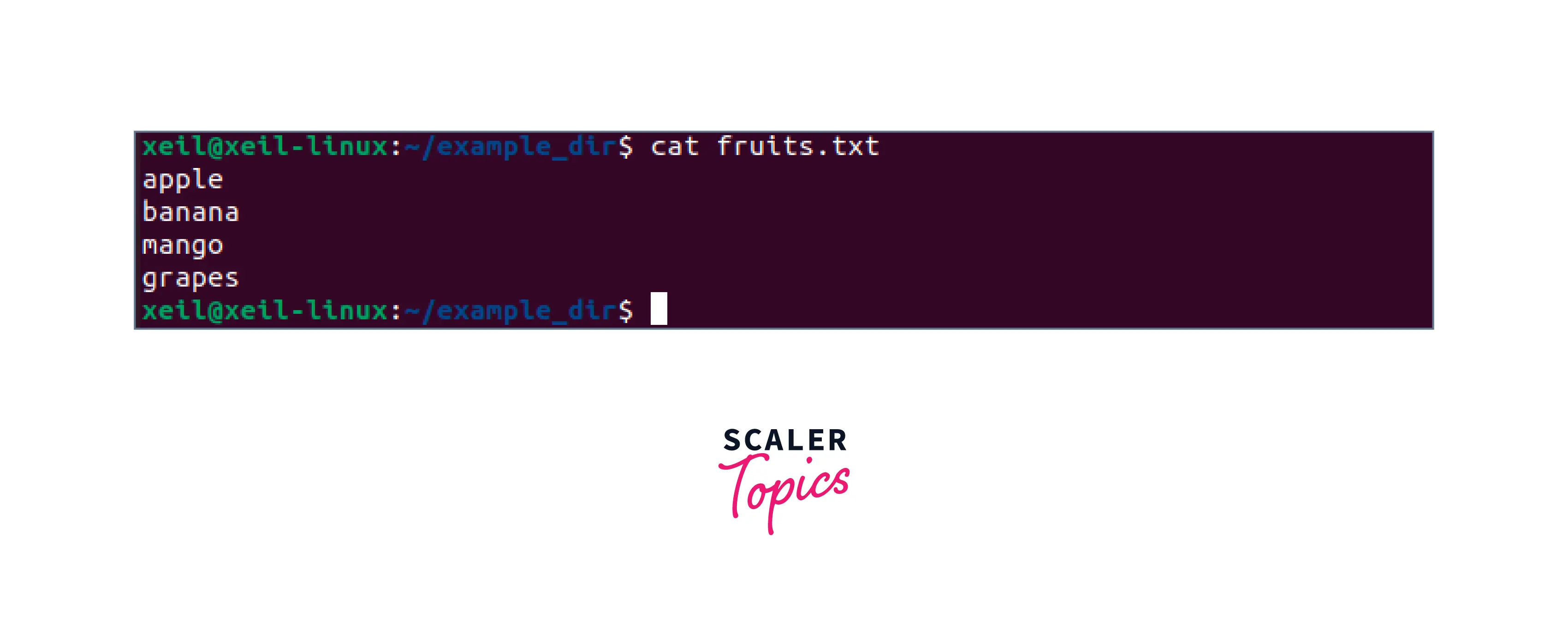
Here, the cat command displays the contents of the text file named fruits.txt.
There are various useful options available for the cat command. Some of the commonly used options are listed below-
- -n: This option when used with the cat command will display the line numbers for each line in the output.
- -b: This option when used with cat will display the line numbers for non-blank lines only.
- -s: This option compresses multiple consecutive blank lines in a file into a single blank line.
Removing a File
Removing a file is similar to removing a directory, in this case, we have to use the rm command.
Syntax:
Here the rm command is followed by [options] which refers to the optional parameters used to modify the behavior of the command. This is then followed by the name of the file that is to be deleted.
Let us see an example, in which we delete a text file.
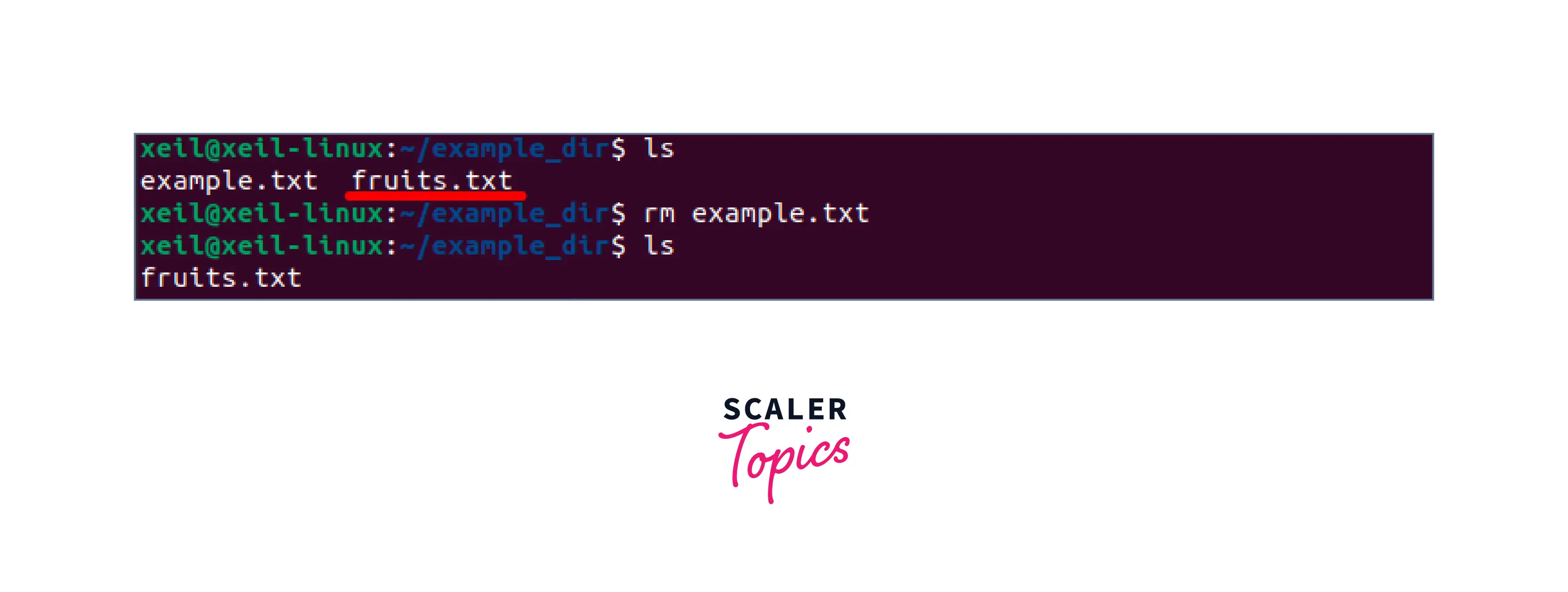
Here, the text file example.txt has been deleted using the rm command.
There are various options available with the rm command. Here are some of the commonly used options of the rm command -
-
-i: This option prompts the user for confirmation before deleting each file. For example:
-
-f: This option forces the removal of files without prompting for confirmation. For example:
-
-r: This option is used to remove a directory and its contents recursively. For example:
Copying a File or Directory
In Linux, we might need to copy a file or directory for various reasons, most importantly it is necessary for backing up and preserving data. In Linux to copy a file or directory from one location to another, the cp command is used.
Syntax:
Here, the [/source/file] refers to the name or path of the file or directory that is to be copied, whereas [/destination/file] refers to the destination where the file or directory will be copied to.[options] represent the optional parameters of the cp command.
Let's see an example where we copy one file to another using the cp command.
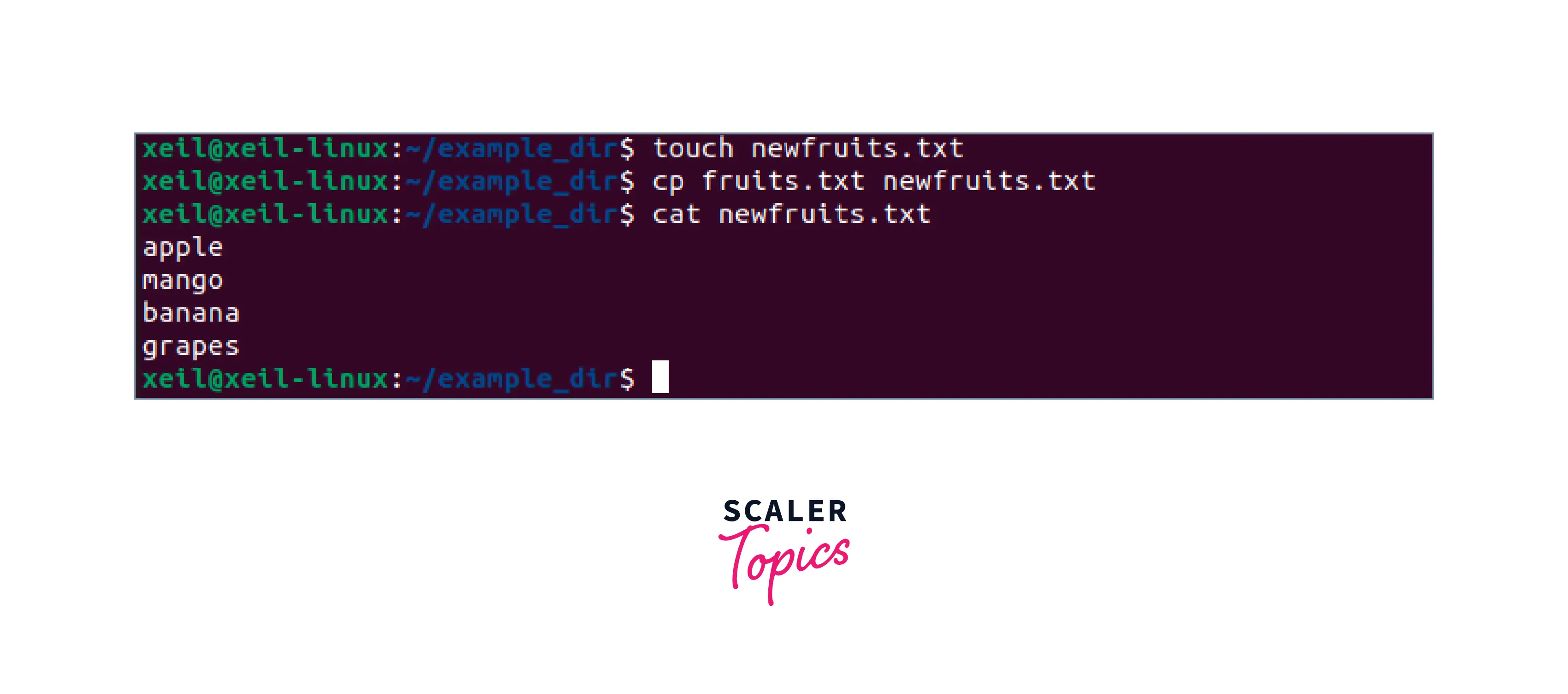
Here, the touch command is used to create an empty file named new_fruits.txt. Following this, the cp command is used to copy an existing file named fruits.txt to the newly created file.
The cp command also has several useful options. Some of the most commonly used options are listed below-
-
-r: This option is used to copy directories and their contents recursively.
-
-i: This option is used to prompt the user for confirmation before overwriting any files that already exist in the destination directory.
-
-u: This option is used to copy the file only if it is newer than the file in the destination directory.
-
-p: This option is used to preserve the original file attributes (such as ownership, permissions, and timestamps) when copying the file.
Moving a File or Directory
To move a file or directory in Linux, the mv command is used.
Syntax:
Here the [/source/file] represents the file that is to be moved, whereas [/destination/file] means the location where the file or directory is to be moved.[options] represents the optional parameters available, which can be used to modify the behavior of the mv command.
Let's see an example, in which we move a file to a new location using mv.
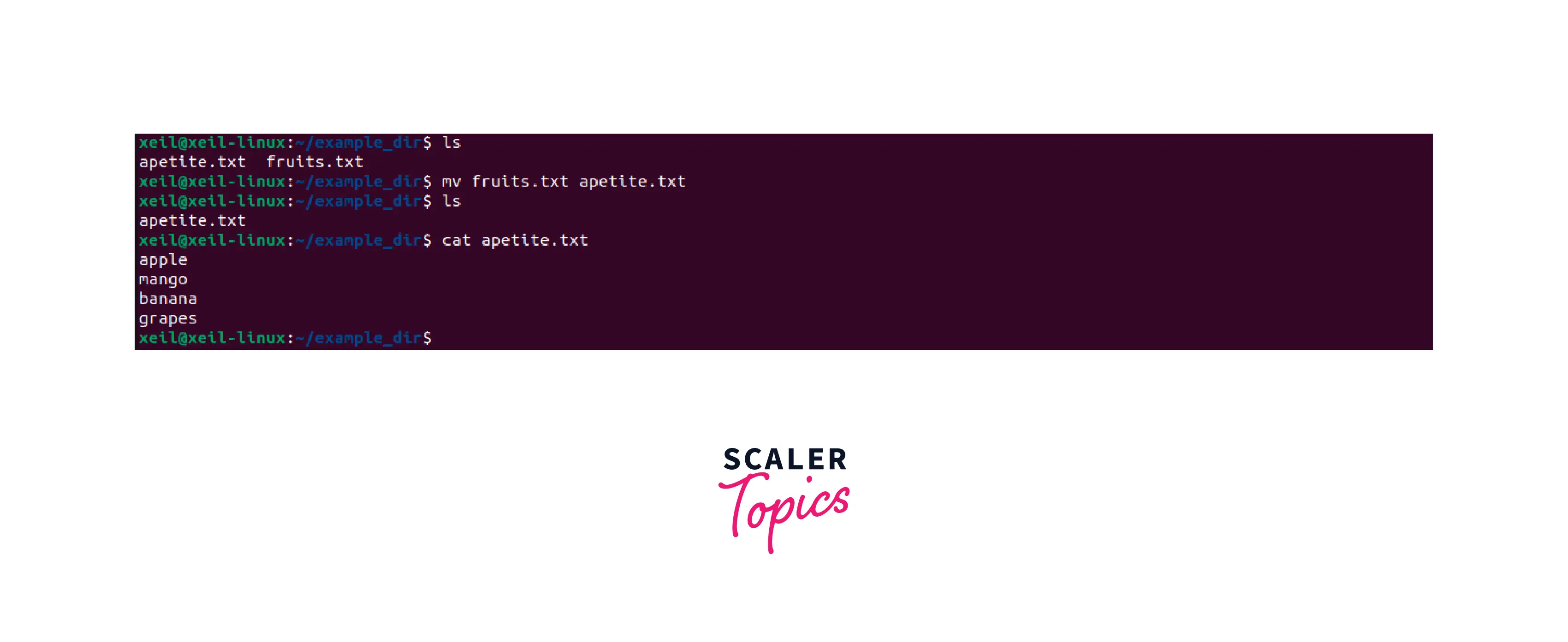
Here, the fruits.txt file has been moved to the apetite.txt file using the mv command.
There are various useful options for the mv command too. A few commonly used ones are listed below-
-
-i: This option prompts the user for confirmation before overwriting an existing file.
-
-u: This option moves the source file only if it is newer than the destination file.
-
-n: This option prevents the overwriting of an existing file.
Conclusion
- File manipulation can be defined as the process of creating, modifying, deleting, and managing files in an operating system.
- File manipulation commands are an essential part of Linux and are necessary for navigation since historically, Linux has always been preferably used through the command line.
- There are various file manipulation commands available in Linux, with which you can create, view, copy, move, and delete files and directories.
- Each of these commands has its own set of options and parameters that can be used to customize their functionality and it's always good to have a basic understanding about these.
